Key takeaways:
- Effective gender equality advocacy requires understanding the social and economic barriers faced by women, emphasizing that it is a societal issue benefiting everyone.
- Local businesses can drive change by fostering community connections and sharing their commitment to diversity and inclusion, inspiring others to follow suit.
- Successful engagement strategies include collaborative events, tailored training, and sharing relatable success stories that resonate with the community.
- Measuring the impact of advocacy through customer feedback, surveys, and social media analytics provides tangible insights and encourages more businesses to participate.
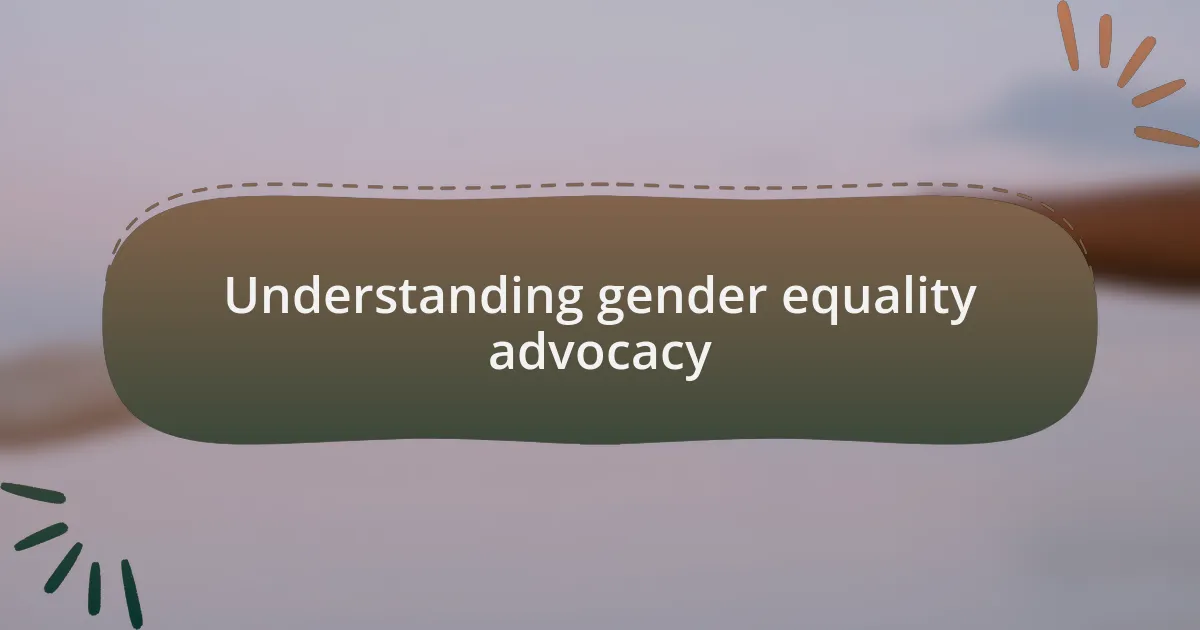
Understanding gender equality advocacy
Gender equality advocacy goes beyond just raising awareness; it’s about creating tangible change in societal norms and policies. I still remember my first community meeting where we discussed the underrepresentation of women in local leadership roles. The passion in the room was palpable, but it made me wonder—how many of us truly understand the barriers these women face?
From my experience, effective advocacy requires a deep understanding of both the social and economic dimensions of gender inequality. I once spoke with a business owner who shared her struggles with gender biases in hiring practices. Hearing her personal story highlighted the real-world consequences of inequality and reminded me that advocacy is rooted in individual experiences.
It’s crucial to recognize that gender equality is not just a women’s issue; it’s a societal one. I often ask myself, how does gender equality benefit everyone, including men? I’ve seen firsthand that creating an environment where everyone thrives leads to stronger communities and, ultimately, a better economy.
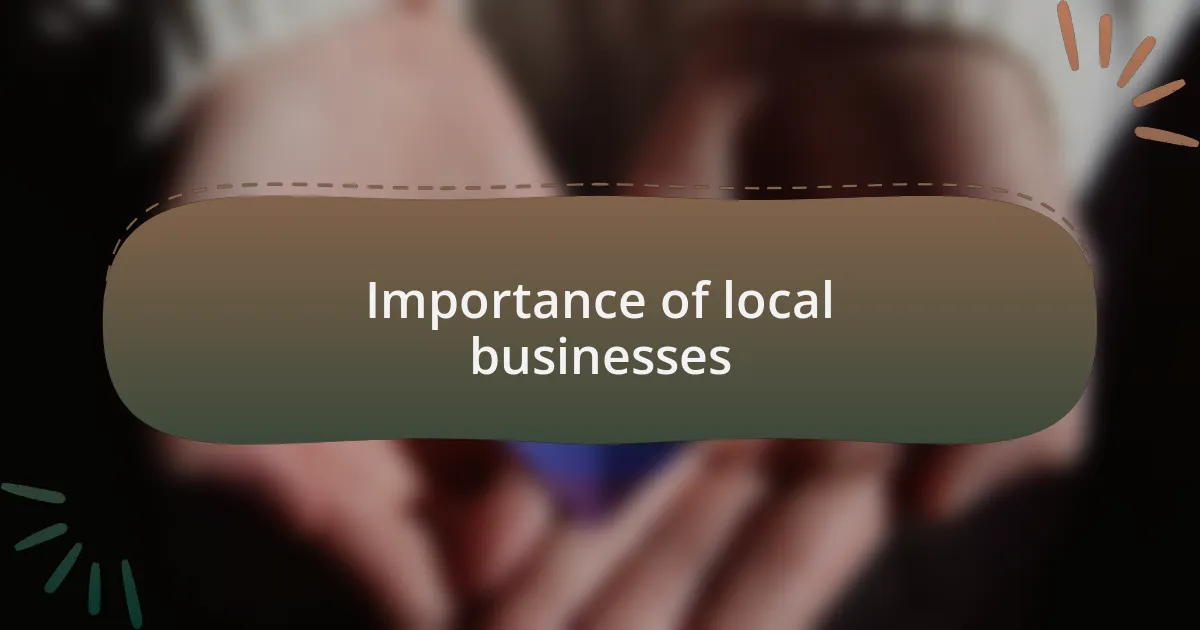
Importance of local businesses
Local businesses play a pivotal role in shaping the identity and culture of our communities. In my own town, I’ve witnessed how a single café can foster connections among neighbors, becoming a hub for discussions—not just about daily life, but about important issues like gender equality. It makes me think, how much more could we achieve if every local establishment embraced social responsibility?
These businesses often have deep ties to the community, which allows them to advocate for change in a relatable way. I recall attending a small business event where a local boutique owner passionately spoke about her commitment to supporting women in her hiring practices. Her authenticity resonated with others, sparking a ripple effect that encouraged more entrepreneurs to consider how they can promote gender equality within their own organizations.
Moreover, local businesses can serve as role models, illustrating the benefits of diversity and inclusion in the workplace. For instance, I once collaborated with a neighborhood bookstore to host a panel discussing women authors. The turnout was overwhelming, and it was inspiring to see different generations coming together to celebrate female voices. This experience reinforced my belief that when local businesses prioritize equality, they can drive meaningful change and inspire others to follow suit.
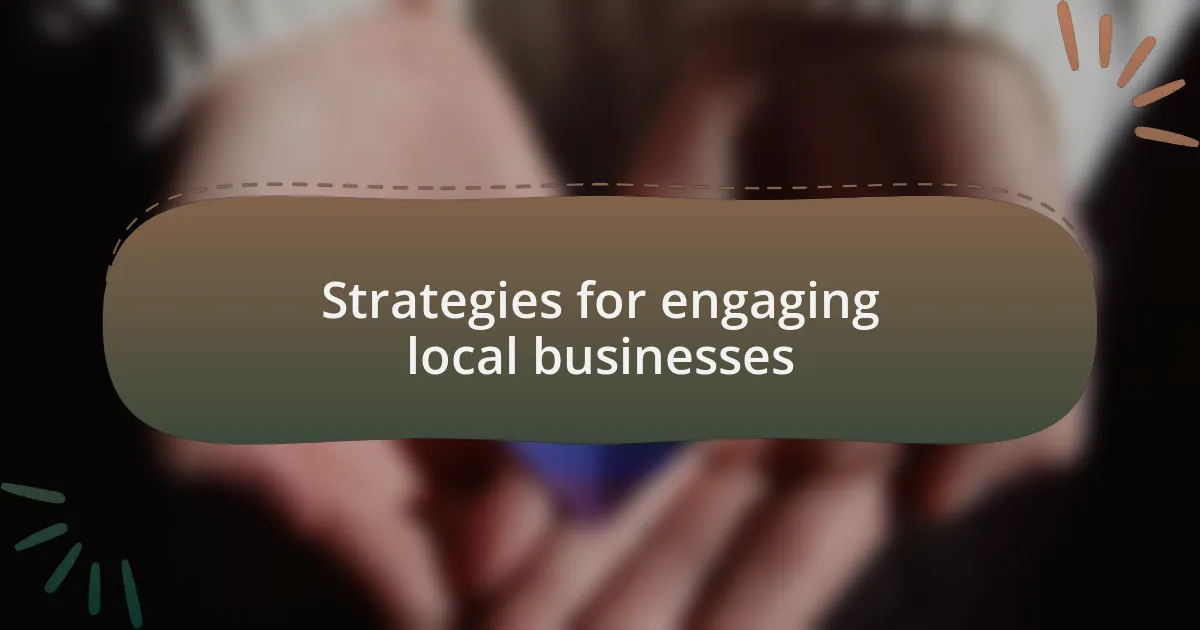
Strategies for engaging local businesses
One effective strategy for engaging local businesses is to create collaborative events that showcase their commitment to gender equality. I remember organizing a local fair where businesses sponsored booths highlighting their diversity initiatives. This not only increased their visibility but also fostered a sense of community ownership over social issues. Isn’t it fascinating how a simple gathering can ignite conversations and alliances?
Another approach I found impactful is to provide training and resources tailored to local business owners. At a workshop I facilitated, I shared best practices on fostering inclusive workplaces, and the feedback was overwhelmingly positive. It struck me how eager these entrepreneurs were to learn—many had never considered the broader implications of their hiring practices. How can we leverage that enthusiasm to create lasting change?
Lastly, sharing success stories from businesses that have made strides in gender equality can be incredibly motivating. I once highlighted a local restaurant that implemented equitable pay and mentorship programs for women employees. The owner shared their journey with the community, and I saw firsthand how inspiration breeds action. It makes me wonder: if we celebrate these successes, how many more local businesses might take steps toward similar changes?
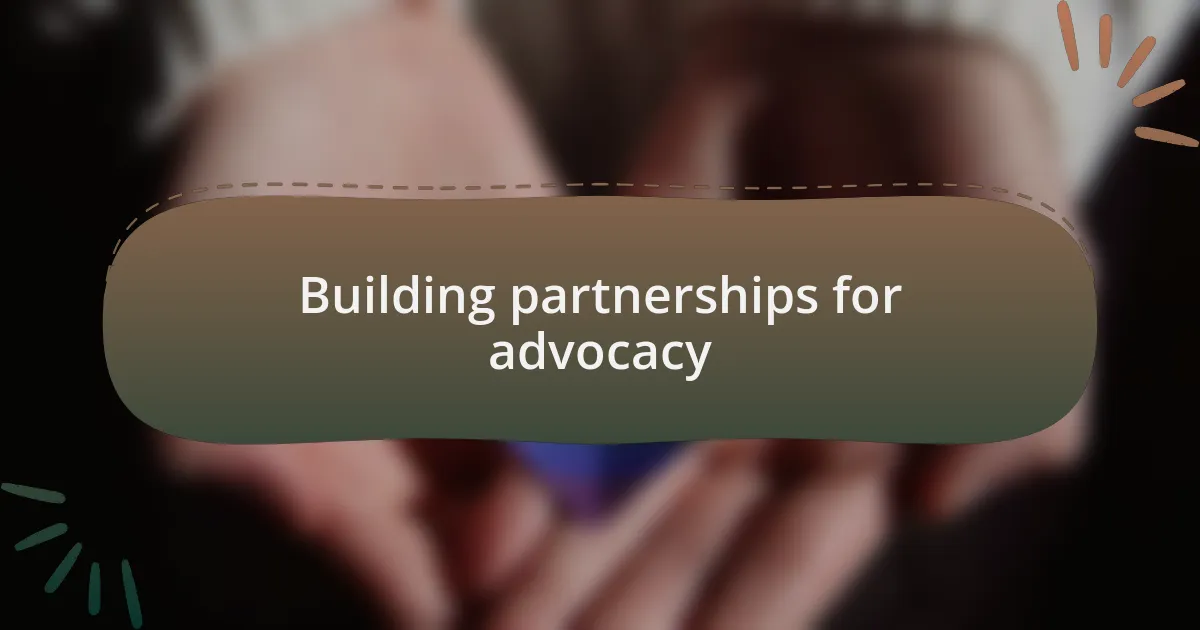
Building partnerships for advocacy
Building partnerships for advocacy requires establishing genuine relationships that resonate with shared values. I recall a time when I reached out to a local coffee shop owner passionate about promoting gender equality. Rather than just a transactional interaction, we discussed ways we could collaborate, resulting in a co-hosted panel on women’s empowerment. It was invigorating to see how one person’s enthusiasm could create a ripple effect in the community.
When businesses actively participate in advocacy groups, they can amplify their impact significantly. I remember visiting a local bookstore that partnered with a non-profit focusing on gender issues. Their book club not only generated sales but also fostered deep conversations among attendees, effectively turning casual readers into advocates. Can you imagine the power of a shared reading experience transforming perspectives and inspiring action?
Furthermore, embracing a transparent approach to these partnerships can lead to even stronger connections. I’ve had moments where businesses openly shared their struggles in implementing gender equality policies. By being vulnerable, they invited others to share their experiences, creating a supportive environment. Isn’t it interesting how openness can turn potential barriers into bridges for collaboration?
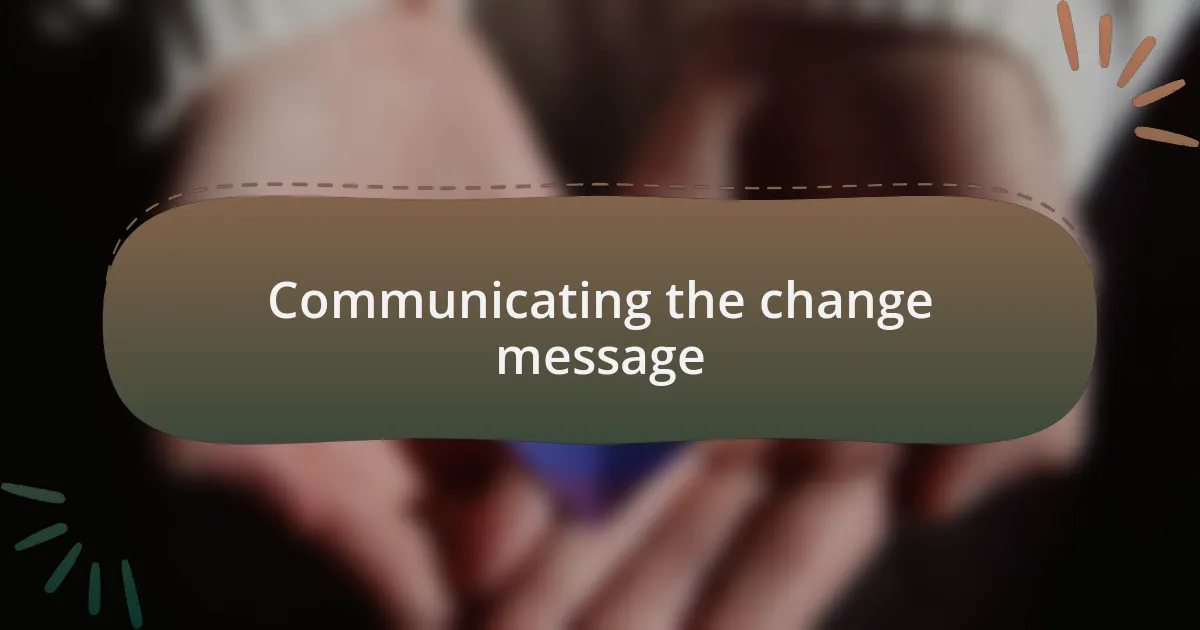
Communicating the change message
Communicating the change message effectively hinges on clarity and authenticity. I recall a session where I helped a local business craft their messaging around gender equality. By sharing personal stories of women impacted by these issues, the business owner’s voice became relatable. Isn’t it fascinating how a heartfelt narrative can connect with audiences on so many levels?
In another instance, I facilitated a workshop that encouraged businesses to include their employees in creating messaging. When team members shared their personal experiences, the change message resonated more profoundly. It was incredible to witness how their collective stories transformed the company’s approach to advocacy. Who better to convey the message than those living it daily?
Moreover, utilizing various channels enhances the reach of the change message. I remember a small boutique leveraging social media to share not just promotional content but stories of women behind their products. It was refreshing to see how engaging visuals coupled with authentic storytelling could spark conversations online. Isn’t it amazing how a platform can amplify voices that are often unheard?
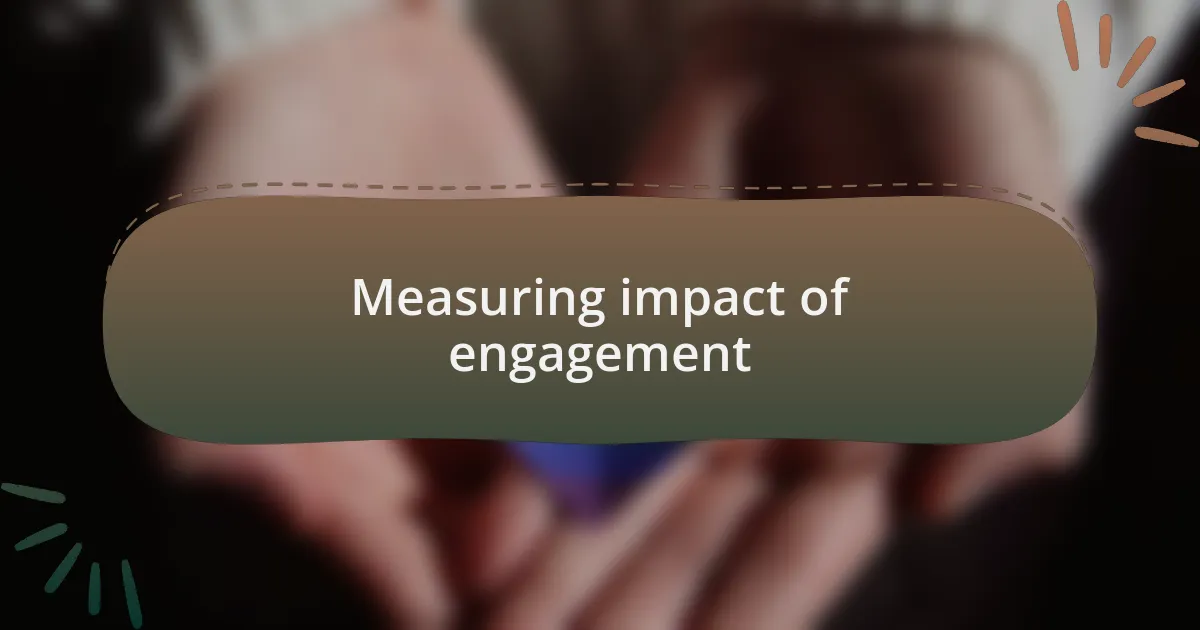
Measuring impact of engagement
Measuring the impact of engagement can sometimes feel like capturing smoke in a bottle, but with the right strategies, it becomes tangible. I remember working with a local café that began tracking their customer feedback after promoting gender equality initiatives. They found a noticeable increase in positive reviews and repeat customers, illustrating how engaged customers not only appreciate advocacy but also support businesses that align with their values. Isn’t it compelling to see numbers confirm what we feel intuitively?
Another approach I found effective was conducting surveys to gauge community sentiment before and after campaigns. For instance, a small gym I collaborated with implemented a fitness program designed for women, addressing barriers they faced in accessing traditional spaces. The pre- and post-engagement surveys revealed a significant shift in perceptions—and many women expressed newfound confidence in participating. It’s amazing how simply asking for feedback can illuminate the real effects of our efforts, wouldn’t you agree?
Tracking social media engagement offers yet another layer of insight. I witnessed a local shop utilize analytics to measure interaction with their gender equality posts—likes, shares, and comments provided invaluable data. They realized that conversations sparked by their advocacy reached far beyond their immediate network, inspiring even more businesses to join the movement. It’s quite powerful to see digital engagement transform into a grassroots wave of support, don’t you think?
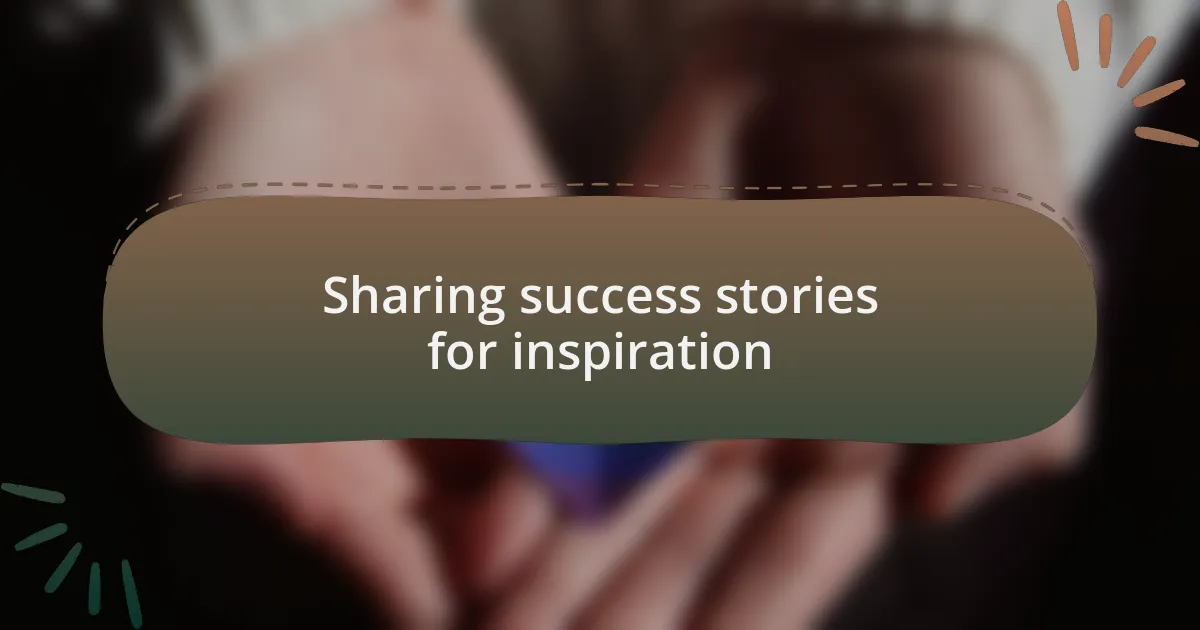
Sharing success stories for inspiration
One inspiring example stands out in my mind: a local bookstore that began showcasing the works of female authors in their window display. The decision led to increased foot traffic and sparked conversations in the community about the importance of representation in literature. It’s fascinating how sharing stories of success, even in small gestures, can create a ripple effect and encourage others to follow suit, wouldn’t you agree?
I also worked with a craft brewery that decided to host a series of events celebrating women in brewing. They shared heartfelt testimonials from female brewers and attendees alike throughout their marketing campaign. This authentic storytelling brought the community together, and I watched as more women felt inspired to pursue their passions in an industry dominated by men. It’s amazing how personal success stories can ignite a spark of change, transforming what seems like an uphill battle into a collective journey toward equality.
Reflecting on these experiences, I often think about the power of hope in storytelling. I remember attending a local art fair where a muralist unveiled a piece highlighting gender equality, inspired by her own struggles as a woman artist. The overwhelming support she received was palpable, and it reminded me that sharing triumphs not only uplifts individuals but also fosters a sense of unity. How can we harness these narratives to motivate even more people to contribute to positive change?